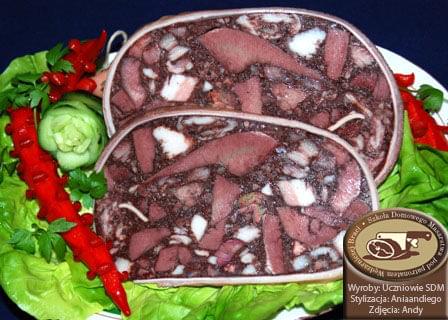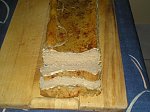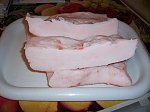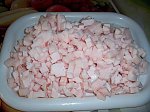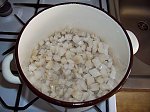Hey, Hey Toolman...
Please don't think I'm being critical. I`d just like you to consider some safety issues here. I think this is a great recipe - BUT..... cased and smoked without using a nitrite cure? Uhhh... not me! Is this an old family recipe? Whoever put it together probably did so before the consistent use of sodium nitrate/nitrite came into common usage as curing agents.
Rytek Kutas said the first rule of sausage making is,
"If it can't be cured... it can't be smoked!" Casing the sausage cuts off oxygen.
Anaerobic bacteria do not require oxygen and certain pathogenic bacteria in sausage being smoked certainly present a risk. Meat covered with plastic wrap for "overnight curing" inside a refrigerator presents a risk as well. Most bacteria thrive in the "danger zone" between 40° F. 4° C.) and 140° F. (60° C.). However, two foodborne bacteria,
listeria monocytogenes and
yersinia enterocolitica can actually grow at refrigerator temperatures!
Smoke also cuts off oxygen. True, the cooking will destroy
trichinella spiralis - the parasitic roundworm whose larval form may be present in the flesh of pork or wild game - whose painful infection is known as
trichinosis. Cooking will also destroy
staphylococcus aureus, salmonella, campylobacter jejuni, shigella, bacillus cereus and other bad bugs,
BUT...
botulinum spores are another story! They are extremely persistent and will survive heating up to 250°F. (121°C), freezing, smoking, and drying.
An
obligate anaerobe cannot grow in the presence of oxygen. Without oxygen, the addition of sodium nitrates or sodium nitrites is necessary to prevent botulism poisoning. It also becomes crucial that meat be removed from the
"danger zone" temperature range as quickly as possible during any preparation or cooking process. This includes grinding, mixing, and stuffing sausages, procedures often supported using ice, ice water, or refrigeration and freezing. As bacteria need moisture to multiply and meat is about three-quarters water, it becomes an ideal environment for the growth of bacteria, even when it is mostly dried.
Clostridium Botulinum is a common obligate anaerobic bacterium microorganism found in soil and sea sediments. Although it can only reproduce in an oxygen-free environment, when it does reproduce, it produces the
deadliest poison known to man - botulinum toxin. One millionth of a gram ingested means certain death - about 500,000 times more toxic than cyanide. Onset of symptoms can occur quickly and include nausea, stomach pain, double vision, and spreading paralysis, ultimately reaching the heart or respiratory organs. If treatment is given and the dose is low, half of those affected may survive, but recovery may take months or years. Although fatalities occur yearly, especially in countries where home canning is popular, the risk of acquiring botulism is very, very low. However, the lethal consequences of poisoning may make you wish to reconsider the proper addition of sodium nitrate/nitrite in your products to almost eliminate the risk. Worldwide, there are about 1000 cases of botulism each year.
The rod-shaped bacterium was first recognized and isolated in 1896 following the poisoning of several people who had consumed bad ham. It was later discovered that due to the enzyme
superoxide dismutase, the bacterium might actually tolerate very small traces of oxygen. Once again, botulinum spores are extremely persistent and will survive heating up to 250°F. (121°C), freezing, smoking, and drying. Insidiously, they lie in wait for the right conditions to occur and give no foul smell or taste, making it even more treacherous. In non-cooked fermented sausages, the microorganism must be destroyed using a combination of salt, a drop beyond 5.0 pH, and a minimum drop in Aw water activity to 0.97 or less.
Additionally, placing fresh vegetables or un-sterilized (garden fresh) spices into sausage is not recommended as botulinum spores are not uncommon on leafy herbs, peppers, beans, chilies, and corn. Cut off from oxygen by being stuffed into casings and placed in a smoker, the smoking temperatures are ideal for botulinal bacteria growth. The risk using fresh garlic is less, but cases of botulism poisoning have been reported after people have eaten home-canned garlic cloves in oil - the ideal environment for anaerobic bacterial growth!
Whew!

Please don't think I'm being critical. I'm trying to be helpful in the spirit of fellowship. I'd just like to see you healthy and alive! Please consider the use of nitrite in your sausage. Why not read all about it in Stan Marianski's new book entitled, "Home Production Of Quality Meats And Sausages". I'm plugging it because it is probably the most comprehensive publication on the market for the home consumer and home sausage maker.
Also, in the tech section of this forum, I've posted information about the curing agents with their varying strengths in different countries. Please let me know if I may be of any help.
Best wishes,
Chuckwagon
